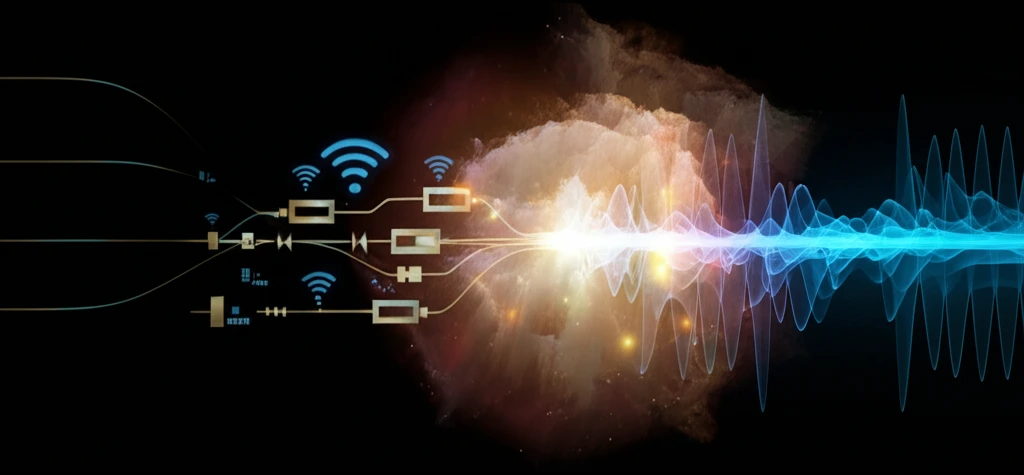
Beyond 5G: How Nonlinear Transmission Lines Could Revolutionize Wireless Communication
"Researchers are exploring composite right/left-handed transmission lines (CRLH) loaded with Schottky varactors to develop advanced communication technologies."
In the ever-evolving world of wireless communication, the demand for faster, more reliable, and energy-efficient technologies is constantly growing. Researchers are continually exploring new materials and designs to push the boundaries of what's possible. One promising avenue of exploration lies in the field of nonlinear transmission lines (NLTLs), specifically composite right/left-handed (CRLH) transmission lines loaded with Schottky varactors.
Imagine a world where your devices connect seamlessly, consuming minimal power while delivering lightning-fast data transfer rates. This vision may not be as far off as you think. This article dives into the innovative research surrounding CRLH transmission lines and their potential to revolutionize wireless communication beyond current 5G technology.
We'll break down the complex concepts in this research, exploring how these specialized transmission lines function, what makes them unique, and the potential impact they could have on the future of wireless technology. Whether you're an engineer or simply curious about the tech that could shape tomorrow, join us as we explore the fascinating world of nonlinear transmission lines.
Understanding Nonlinear Transmission Lines (NLTLs): The Basics

At their core, transmission lines are the pathways that guide electrical signals from one point to another. Traditional transmission lines are designed to be linear, meaning the signal propagates through them without significant distortion. However, nonlinear transmission lines (NLTLs) introduce elements that cause the signal to behave in a nonlinear fashion. This nonlinearity, while seemingly complex, opens up exciting possibilities for signal manipulation and control.
- Linear Transmission Lines: Signals pass through relatively unchanged.
- Nonlinear Transmission Lines (NLTLs): Introduce elements (like Schottky varactors) that distort the signal in a controlled way.
- Schottky Varactors: Voltage-dependent capacitors that add nonlinearity and enable signal manipulation.
The Future of Wireless: NLTLs Leading the Way
While the research discussed here is still in the experimental phase, the potential benefits of NLTLs are significant. As wireless communication continues to evolve, innovative technologies like NLTLs will play a crucial role in shaping the future. By exploring and refining these advanced techniques, we can pave the way for a world of faster, more efficient, and more reliable wireless communication.
